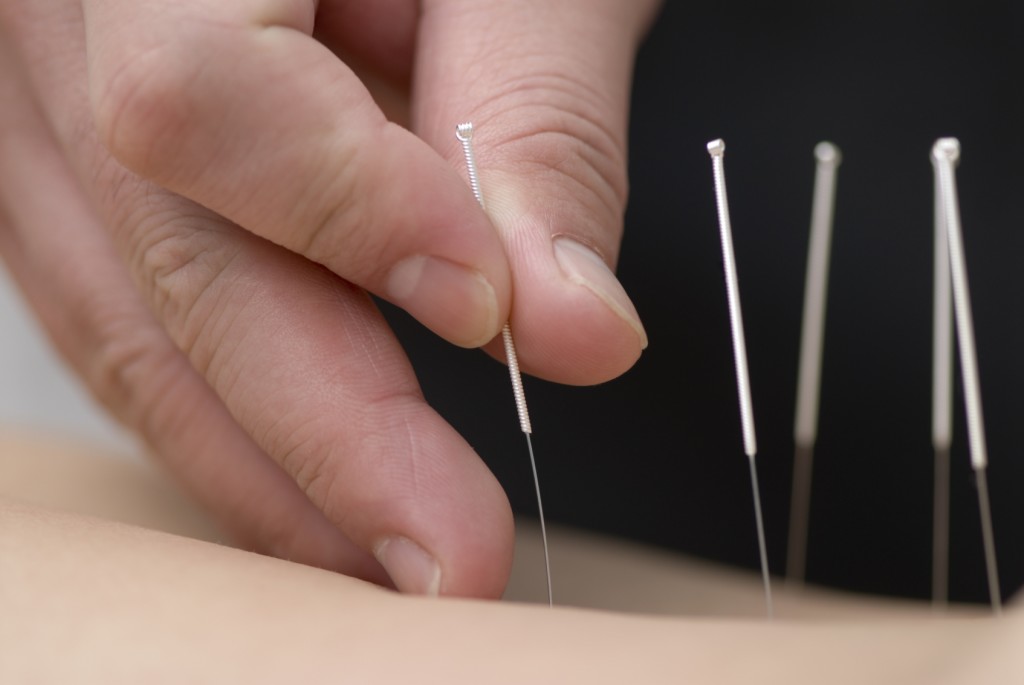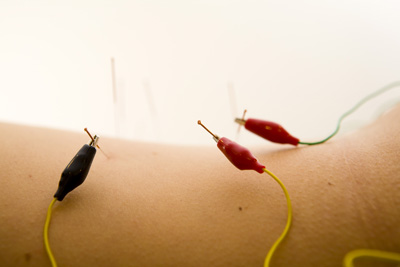Acupuncture
Acupuncture is an ancient health care system employed for over 2,500 years. Earliest practitioners used pointed rocks, bones, and bamboo sticks to perform acupressure and bleeding techniques. The progression continued from bone to bamboo to ceramic, bronze and iron and then to steel. Modern licensed acupuncturists are medically trained to use sterile, disposable steel needles that are about 10-16 times thinner than an average hypodermic needle used to draw blood or give injections. They are approximately the size of a cat’s whisker and very flexible, so do not hurt in the same way. Most people experience nothing, a slight pricking sensation, or a vague numbness, heaviness, tingling or dull ache for a few seconds where the needles have been inserted. All of these reactions are good and a sign that the treatment is working. The needles stay in about 15-30 minutes while the patient rests on the table, after which many people tend to feel extremely relaxed and rebalanced.
Acupuncture promotes the body’s innate ability to heal naturally. Our bodies produce a wide range of natural pain relieving substances, natural anti-inflammatory chemistry, hormones, immune system enhancers, and so forth, all without the need for outside drugs. Just as we don’t access 100% of our brain’s resources or our muscles’ resources, we don’t always access 100% of our inner self-healing resources. Acupuncture helps us squeeze more out of our natural ability to heal ourselves – to help us access closer to 100% of our full potential.
Modern science has begun to understand the mysteries of this ancient medicine with the support of new studies conducted by leading scientists, hospitals, and medical research facilities from all over the world. Today acupuncture is proving itself as a respected, effective and noninvasive modality for a wide variety of medical conditions.
The question of “how it works” can be answered through two different lenses: that of ancient eastern philosophy and that of modern biomedical mechanisms. Neither one is more right or wrong than the other. Both explanations are completely valid, differing in vocabulary, but discussing the same phenomenon.
At the core of this ancient medicine from a traditional view is the philosophy that Qi (pronounced “chee”), or vital energy, flows throughout the body. Qi animates the body and protects it from illness, pain and disease. A person’s health is influenced by the quality, quantity and balance of this Qi. Acupuncturists will take a full health history and perform a physical exam including tongue and pulse evaluations in order to detect and diagnose any specific imbalances of Qi. They will then place fine, sterile needles at specific acupoints along meridian pathways where the Qi flows, in order unblock obstructions and rebalance the Qi so it can freely circulate and provide adequate nourishment to cells, organs, glands, tissues, and muscles. This can eliminate pain and restore the body’s ability to heal itself, ultimately leading to optimal health and well being.
Several current theories on the mechanism of acupuncture have begun to stem from modern scientific research as well:
- Neurotransmitter Theory: Acupuncture affects higher brain areas, stimulating the secretion of beta-endorphins and enkephalins in the brain and spinal cord. The release of neurotransmitters influences the immune system and the antinociceptive system.
- Autonomic Nervous System Theory: Acupuncture stimulates the release of norepinephrine, acetylcholine and several types of opioids, affecting changes in their turnover rate, normalizing the autonomic nervous system, and reducing pain.
- Vascular-interstitial Theory: Acupuncture effects the electrical system of the body by creating or enhancing closed-circuit transport in tissues. This facilitates healing by allowing the transfer of material and electrical energy between normal and injured tissues.
- Blood Chemistry Theory: Acupuncture affects the blood concentrations of triglycerides, cholesterol, and phospholipids, suggesting that acupuncture can both raise and diminish peripheral blood components, thereby regulating the body toward homeostasis.
- Gate Control Theory: Acupuncture activates non-nociceptive receptors that inhibit the transmission of nociceptive signals in the dorsal horn, “gating out” painful stimuli.
The future of medicine depends upon our ability to integrate these diverse views of the human body. When it comes to your health, blending the strengths of both worlds is always your best option.
See what Acupuncture can treat
Electro-Acupuncture
Electro-acupuncture is a form of acupuncture that involves the use of fine microcurrent technology to deliver continuous healing electrical pulses to specific traditional acupuncture sites along the body. Electro-acupuncture feels like tapping where the needle is located, and is not painful.


